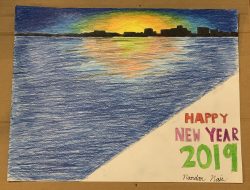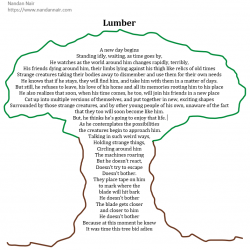This past week in art class, we learnt about the different ways artists observe a photo reference. There are many tricks and skills that they use to draw various objects.
Below are a few techniques they use:
Blocking out info – Cover large parts of the reference, and focus on one area. Once you have finished, move to the subsequent sections. This allows you to cut the piece into manageable portions, and not get overwhelmed by the entirety of the work.
Upside down – Flip the image upside down and draw it upside down. This works because if we are looking at an image right-side up, then our brains automatically start naming the different areas (ex. If you are drawing a horse, you will identify the head, legs, neck, mane, etc.). This is something which the left side of our brain does for organization. By flipping it upside down, it becomes harder to identify its parts, thus shutting down your left brain (temporarily), and allowing your right brain to take over. It also makes you look more at the shape of the lines rather than what each area is, and this improves the quality of your drawing.
Crosshairs – Draw a grid on the image and split it into 9 imaginary squares (or more if needed). Draw the same grid on your paper, and fill in each square. Similar to blocking out info, this lets you divide the reference up into sections, and makes the workload more manageable.
Basic shapes – Draw the basic shapes in the image, i.e. squares, circles, triangles, etc. Afterwards, fill in with the details. This gives you a vague outline, and makes it easier to add the details, as opposed to drawing it’s exact outline.
A reason behind why these techniques work so well is what happens inside your brain. There are two parts of our brain: the left side and the right side. The left side is responsible for your logical skills and sense of organization, and is used when doing tasks which involve math, science, or the like. The right side handles your creativity and imagination, and is used when doing things like art or writing stories. Normally, our left brain controls most daily activities, and the right brain is acting as it’s assistant. This can be related to how a driver and behave in a car. The left brain is the driver, and the right brain is the passenger. When drawing, the main goal is to make the right brain take over our thought processes, and have our left brain in the “passenger seat”. In using techniques such as upside down, we are temporarily shutting down our left brain, and forcing our right brain to take over, letting us visualize the artwork better, resulting in a better final product.
No talking – Avoid talking. This lets you focus on your artwork.
Lines and angles – Look at the lines and angles in a reference, and draw the same. For angles, you can refer to them as the hands of a clock (one o’clock, three o’clock, etc).
Pencil measurements – Instead of using a ruler, lock your arm in a straight position and measure objects using your pencil, noting them as you go. This helps you make relationships and connections between various objects, allowing you to make the drawing more proportionate.
Negative space – Draw the space around your focal point i.e it’s outline, and the space behind the object. This, like with using pencil measurements, helps you make your drawings more proportionate, and in my opinion is slightly easier to draw.
 Happy New Year 2019!!!!
Happy New Year 2019!!!!  Lumber
Lumber
So, what do you think ?